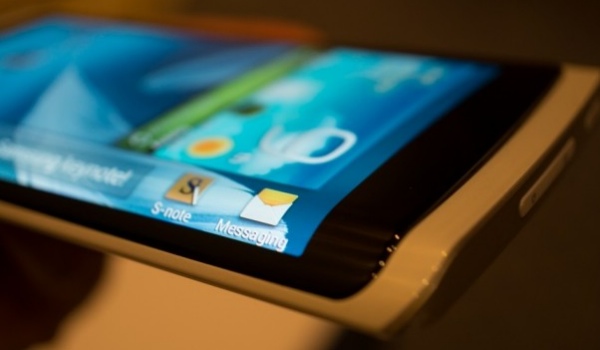Affiliate links on Android Authority may earn us a commission. Learn more.
CES is over - where are the bezel-less phones?

With CES 2013 now over, the New Year is looking quite promising with respect to the technology market, especially in the world of Android. Big name companies have already shown off all kinds of goodies that will no doubt set the bar for what is to come. Many of the most exciting devices feature specs that could have been only dreamed of in the past.
After all of the excitement has simmered down, however, one can’t help but notice that there is a glaring lack of advancement in one specific field: design. The actual physical appearance of the new handsets that are coming out doesn’t seem to be evolving at the same rate as the rest of the phone. Many of the most popular modern devices feature very similar aesthetics, a minimalistic candy-bar design, the only real variables being the placement of the physical buttons on the perimeter of the device. These designs aren’t bad mind you, and they still look fantastic, but change is always welcome.
An idea that has long been passed around is to create a phone that has a true edge-to-edge display; a phone without a bezel. Almost the entire interaction with the phone occurs directly on the screen, so removing the bezel would utilize the entire surface area of the device. Creating a bezel-less phone would dramatically change the look and feel of a device, but why hasn’t it been done yet?
What is a bezel?
If you are unfamiliar with the bezel on a phone, it is simply that area that surrounds the display. Looking directly at the front of a device, you will notice a border that surrounds the actual screen; generally it is made of plastic but can also be made of many other products including glass or metal. The real question then, is why is it there? Aside from holding the front facing camera and the speaker at the top of the device, the bezel really doesn’t serve much purpose.

Where has the idea come from?
The idea of a bezel-less phone isn’t new. Look to almost any science fiction film for inspiration; generally an almost all glass (or invisible) device that looks chic and futuristic can be found at some point in the film. In a more realistic sense, there have long been rumors from the likes of Samsung and Motorola. Just recently in 2012, the Galaxy S3 was rumored to be coming with a bezel free face as well as the first rumors of the Droid Razr M. Of course, to date, neither of these companies has released a device sans bezel.
Creating a bezel-less device
There are several arguments that can be made as to the necessity of the bezel on a smart phone. One of the primary points that is made, is that the bezel aids in preventing unintentional screen inputs. After all, these devices are general fully operated via touch screen and not having a bezel may cause the hand that is holding the device to be too intrusive. This issue is easily remedied with software. When the iPad mini was introduced, the thin bezel led Apple to develop a patch to their software that ignores an input that is simply resting on the screen. This software can easily be applied to any device without a bezel, well if Apple hasn’t been patented already that is. And besides, the edge of a device, even if thin, should provide ample room to prevent the palm of a hand to intrude with it.
Another argument that is often made is that the bezel is also meant to act as protection for the screen. Some devices have bezels that extend slightly beyond the face of the screen in order to add protection for when the device is dropped. This is a legitimate concern, but luckily, thanks to modern display technology, a cracked screen may be a thing of the past.
The new flexible screen technology that has been debuted by Samsung could eventually be just the technology that is needed for a bezel-less phone. This flexible display could potentially absorb the impact when dropped, although the exact capabilities of flexible displays are unknown as of now due to how new they are. Alternatively, Gorilla Glass could potentially fit the bill as well. Their technology is improving with every new release, and by the time that a bezel-less device I ready to hit the market, perhaps Gorilla Glass will be able to hold up to a bezel free drop test.
What’s the point?
There are several advantages to having a device that is bezel free. First and foremost, the device would be a looker. Reducing the bezel really illuminates the beautiful screen. Removing the bezel would also add the effect of reducing weight in the phone. Smart phones are becoming lighter in weight with every new rendition, but every bit counts.
The bezel-less device has been rumored for quite some time now but as of yet there seems to be little momentum in creating such a device. With such little word on when (or if) such a device will come to fruition, we can only hope that there is enough interest in 2013 to spawn these kind of devices. Would you be interested in a bezel-less phone?